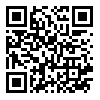Volume 6, Issue 4 (Autumn 2020)
Iran J Neurosurg 2020, 6(4): 195-202 |
Back to browse issues page
1- Neurosurgery Research Center, Rasul Akram Hospital, Iran University of Medical Sciences, Tehran, Iran.
2- Neurosurgery Research Center, Rasul Akram Hospital, Iran University of Medical Sciences, Tehran, Iran. ,dr.aslaninia@gmail.com
2- Neurosurgery Research Center, Rasul Akram Hospital, Iran University of Medical Sciences, Tehran, Iran. ,
Abstract: (7228 Views)
Background and Aim: Cerebrovascular brain incidents especially brain aneurysm ruptures are a major cause of death and disability. Monitoring Somatosensory Evoked Potential (SSEP) and corresponding changes are used for identifying cerebral ischemia and predicting neuronal injuries during using temporary clips in brain aneurysm surgeries. This approach limits integrated performance evaluation for somatosensory and cortex paths.
Methods and Materials/Patients: This clinical trial study was conducted on the patients who were candidate for anterior cerebral circulation aneurysm surgery during 2017-2018 in Rasul Akram Hospital. SSEP monitoring was performed related to the median nerve in the contralateral wrist to examine the Middle Cerebral Artery (MCA) and posterior tibialis nerve in the contralateral ankle to examine Anterior Cerebral Artery (ACA) during the surgery procedure. Incentive parameters with a power of 5 to 25 milliampere and corresponding duration of 0.2 milliseconds and waves with a frequency of 3.3 Hertz were registered. Before locating temporary clips, SSEP was extracted as a baseline from every patient and then recorded.
Results: Totally 9 patients (9 aneurysms) were studied. Three of them were men and 6 patients women. The age of patients ranged 39-78 years. The clinical status of patients was assessed using the Hunt-Hess scale. Five cases were classified as grade 1, 2 cases as grade 2, and 2 cases as grade 3. Among 9 aneurysms, 7 cases were about A.com artery and 2 cases were in connection with MCA artery, having the size of 5 to 11 millimeters. Friedman test was applied to explore average latency change percentage and amplitude change percentage in 1st, 2nd, and 3rd minutes for the 1st, 2nd, and 3rd clips where the results were significantly different (P=0.050).
Conclusion: Neuromonitoring can be used as an index for examining tissue perfusion level of the brain and help to prevent accidental ischemic injuries of the brain followed by temporary clipping.
Methods and Materials/Patients: This clinical trial study was conducted on the patients who were candidate for anterior cerebral circulation aneurysm surgery during 2017-2018 in Rasul Akram Hospital. SSEP monitoring was performed related to the median nerve in the contralateral wrist to examine the Middle Cerebral Artery (MCA) and posterior tibialis nerve in the contralateral ankle to examine Anterior Cerebral Artery (ACA) during the surgery procedure. Incentive parameters with a power of 5 to 25 milliampere and corresponding duration of 0.2 milliseconds and waves with a frequency of 3.3 Hertz were registered. Before locating temporary clips, SSEP was extracted as a baseline from every patient and then recorded.
Results: Totally 9 patients (9 aneurysms) were studied. Three of them were men and 6 patients women. The age of patients ranged 39-78 years. The clinical status of patients was assessed using the Hunt-Hess scale. Five cases were classified as grade 1, 2 cases as grade 2, and 2 cases as grade 3. Among 9 aneurysms, 7 cases were about A.com artery and 2 cases were in connection with MCA artery, having the size of 5 to 11 millimeters. Friedman test was applied to explore average latency change percentage and amplitude change percentage in 1st, 2nd, and 3rd minutes for the 1st, 2nd, and 3rd clips where the results were significantly different (P=0.050).
Conclusion: Neuromonitoring can be used as an index for examining tissue perfusion level of the brain and help to prevent accidental ischemic injuries of the brain followed by temporary clipping.
Type of Study: Clinical Trial |
Subject:
Vascular Neurosurgery
| Rights and Permissions | |
 |
This work is licensed under a Creative Commons Attribution-NonCommercial 4.0 International License. |





